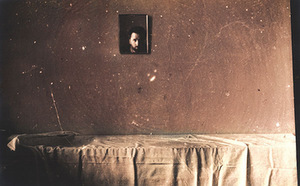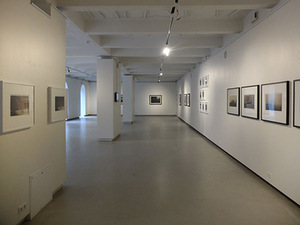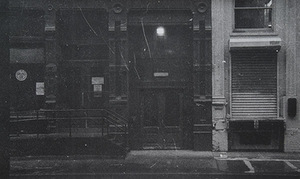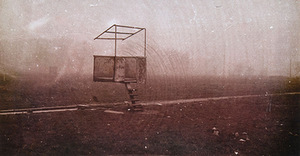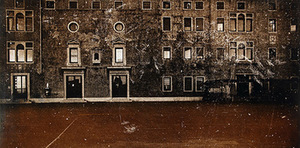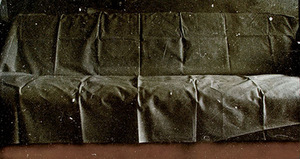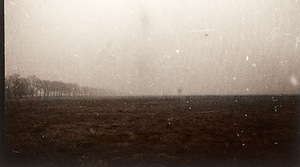The embodiment of intangible states 0
In brief: The presentation of Reminigus Treigys works at the Kaunas photography gallery and the publishing of his album by Lithuanian Photographers' Association Foundation, at least today, seem like stage events. They allow us to evaluate the entirety of photographer's works - only the whole and not the individual works or series.
So, what direction of photography do his works represent? The nearest and the most obvious creative context of this author is an informal group TTL, whose members, besides R. Treigys are Gintautas Trimakas and Alvydas Lukys. Their first group exhibitions where held in the beginning of the 21st century. All of these three artists, in different but similar experiments that reveal their conceptual approach to photography, clearly marked the line that separated them from humanist photography, which prevailed in Lithuania for a long time and also the usual "artistic" photography, based on the aesthetic solutions and lyrical or metaphorical content. On a broader perspective, R. Treigys, as TTL group, is linked to the so-called aesthetics of boredom. This concept was coined by art critic Agnė Narušytė, who sees the common features of the boredom aesthetics in the works of R. Treigys that have formed in the nineties - meditative relationship with a banal object, monotony, emptiness and etc.
R. Treigys works resist "translation" more than a verbal and visual mismatch would allow us to expect. Uncertainty or, more precisely, the impossibility of definition is the invisible core of R. Treigys work. Author states that the most important things for him remain behind the scenes "My photographs have this line, so you could get beyond it and maybe take the viewer with you. That is the most interesting thing for me - what is beyond that line. That invisible side."
R. Treigys creative method, which author himself compares to shamanism, allows him to set free the creative end result from the very nature of photography, which was defined by French philosopher Roland Barthes in a phrase "it-was." Photographer deliberately goes beyond, seemingly undeniable, determined by the technological properties, photographic and fragmented time limit. "Photography is a keeper of time and memory and in my photography the concept of time is abstract: it could have been, it is, it may be..." says the author’s motto at the beginning of the album.
The usual categories of time and space thinking about the works of R. Treigys seem inadequate due to the fact that author is not concerned with capturing documentary facts but rather interested in moods, experiences and states. His works are filled with translucent Nordic melancholy that crisp on the surface of photographs in visible scratches like the first thin ice.
R. Treigys photographs have nothing in common with an art imitating sentimentalism of photography, metaphors and ornamentalism. In fact, this author’s works belong to the contrary side of the spectrum of historical and contemporary directions of photography.
"I can only photograph people close to me, the people I know. [...] You have to love a person to be able to photograph him," says R. Treigys while explaining why human images are so rare in his works. But in the photographs, that do not have any people in them one can feel a similar author's relationship - very personal - with environment and the objects recorded in it.
